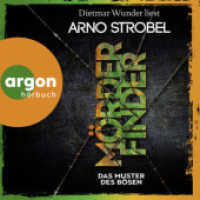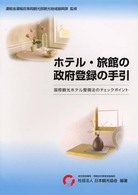Full Description
This book aims to provide a deeper understanding of Third Mobile Window Syndrome and its various forms beyond just Superior Canal Dehiscence. It will illuminate the various presentations of Third Mobile Window Syndrome, provide the means for diagnosis, and elucidate treatments. The disorder Superior Semicircular Canal Dehiscence Syndrome was discovered in 1995 by Dr Lloyd Minor at The John Hopkins University School of Medicine in Baltimore. Though he published his findings in 1998, there remains no book wholly devoted to the topic. For this reason, many neurotologists and otorhinolaryngologists still misunderstand this condition and its presentation.
Structured in six parts, the first part will be important in providing a context, and drawing together all of the learning that has been acquired since 1998, as well as explaining the complexities of the condition. The second and third parts will set out to detail all the aspects that are necessary for diagnosing a patient and then deciding on the best form of treatment, surgical or otherwise. Part four covers special situations, including bilateral SCDS and the pediatric patient. In part five, Philippa Thomson, a patient herself, will describe the patient perspective of symptoms and the complicated journey of identifying a diagnosis and securing expert care. Finally, part six covers future research.
Third Mobile Window Syndrome of the Inner Ear: Superior Semicircular Canal Dehiscence and Associated Disorders will provide clinicians involved in the treatment of inner ear disorders, balance dysfunction, and dizziness with the expertise they need to assist patients with Third Mobile Window Syndrome. It will also supply useful information to neurotologists/otologists, otolaryngologists, and neurologists. Researchers in the field of inner ear disorders will also find this to be a valuable text.
Contents
History of third mobile window syndrome.- Etiology.- Pathophysiology.- The Otologic Mimicker: Vestibular and Auditory Symptoms.- The cognitive/psychological effects.- Other kinds of dehiscences.- Perilymphatic Fistula.- Diagnosis.- Vestibular Symptoms & Magnitude of Disease.- Taking the patient history (interview questions).- Diagnostics.- Imaging.- Treatment.- Medical therapy.- Visual manifestations & treatment .- Surgical Intervention, Revision Surgery and Surgical Complications.- Special situations.- Bilateral SCDS.- Future Research.- From The Patient Perspective.- Patients' experiences.- Patient Stories.- Mismanagement of patients.








